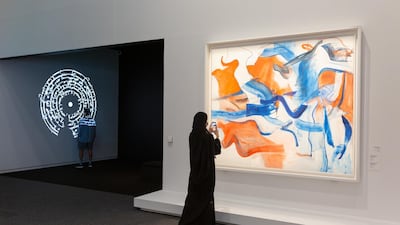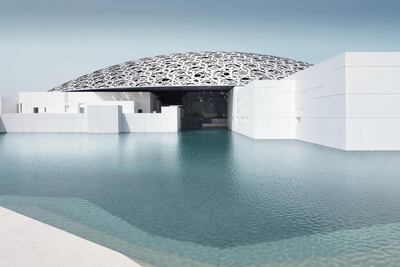In 18th century Paris, the Louvre, a former residence of the French royal family, was opened to the public as a museum, beginning the story of arguably the world's most famous cultural institution. It is now the largest museum on the planet and plays a key role in making France the most visited country in the world.
In 2017, a new branch of the institution came to the Middle East, with the opening of Louvre Abu Dhabi – now one of Abu Dhabi's most recognisable landmarks.
Throughout history, governments have used culture and the arts to tell the world about the uniqueness and vibrancy of the societies they govern. They also play an important role domestically in creating social and cultural ties, as well as jobs across a number of sectors. The investment definitely pays off. Unesco estimates that the global value of the creative economy is more than $2.2 trillion annually.
In an interview yesterday, Mohamed Al Mubarak, chairman of Abu Dhabi's Department of Culture and Tourism, announced that the emirate will invest $6 billion in culture and the creative industries over the next five years. This will see the opening of new western institutions, including the Guggenheim Abu Dhabi, which will bring to the Middle East a rotation of the most important works of contemporary art.
The strategy will entail a wider push to make the UAE's cultural sector part of its post-oil diversification programme. From gaming to media, a target of the new investment plan is to create 16,000 new jobs in the industry, and bring a new generation of creative talent into the country.
In recent years, GCC nations have been investing to highlight the uniqueness of Gulf heritage and culture. In the UAE, the coming Zayed National Museum will highlight 200,000 years of Emirati history. Saudi Arabia's National Transformation Program includes plans to develop 13 museums.
The cultural and economic importance of showing the world the uniqueness of Arab culture extends to all corners of the region. In some parts, instability and economic difficulties have hampered the industry.
Syria's tourism industry, built on its rich cultural offering, was estimated to contribute 12 per cent of the nation's GDP in 2010. Since the civil war, this pillar of the country's economy, and a vital source of hard currency, has dried up.
Other countries, such as Egypt, are addressing lower tourism numbers, worth almost $25bn in 2018, with modernisation programmes. This year, Egypt opened the Grand Egyptian Museum, a vast complex to relieve the world-renowned but overflowing Cairo Museum.
Numbers demonstrate the economic profitability of an investment in culture and the creative industry. But there are deeper, civilisational aims, too. Part of Abu Dhabi's emerging cultural landscape will be the new Abrahamic Family House, a site that includes a new mosque, church and synagogue, intended to be an investment in a civic identity built on tolerance.
The UAE's economic ascent over recent decades has been remarkable. Now, it is turning its attention to a task as grand as civilisational progress, built on pride of heritage, highlighting how today's society is more open than ever before.



